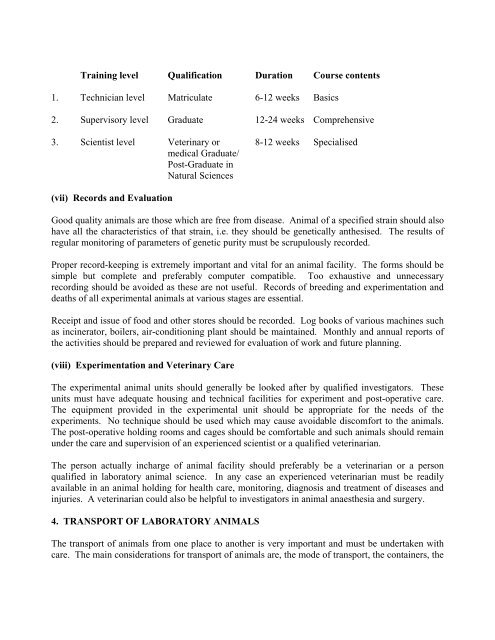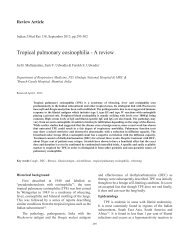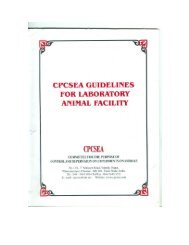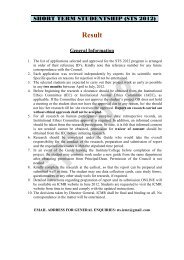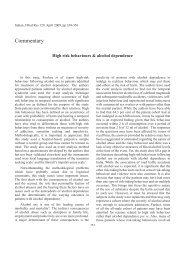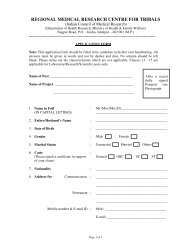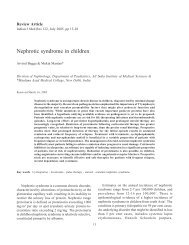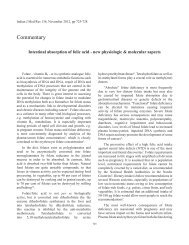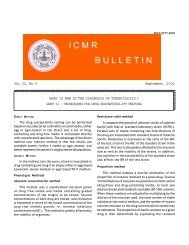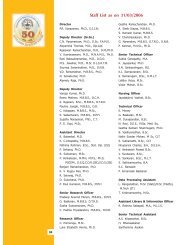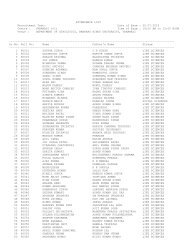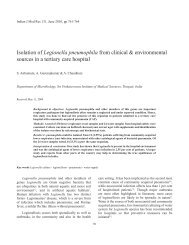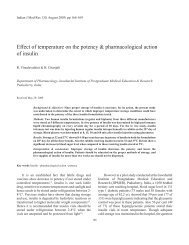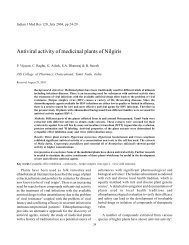(INSA) Guidelines for Care and - Indian Council of Medical Research
(INSA) Guidelines for Care and - Indian Council of Medical Research
(INSA) Guidelines for Care and - Indian Council of Medical Research
Create successful ePaper yourself
Turn your PDF publications into a flip-book with our unique Google optimized e-Paper software.
Training level Qualification Duration Course contents<br />
1. Technician level Matriculate 6-12 weeks Basics<br />
2. Supervisory level Graduate 12-24 weeks Comprehensive<br />
3. Scientist level Veterinary or 8-12 weeks Specialised<br />
medical Graduate/<br />
Post-Graduate in<br />
Natural Sciences<br />
(vii) Records <strong>and</strong> Evaluation<br />
Good quality animals are those which are free from disease. Animal <strong>of</strong> a specified strain should also<br />
have all the characteristics <strong>of</strong> that strain, i.e. they should be genetically anthesised. The results <strong>of</strong><br />
regular monitoring <strong>of</strong> parameters <strong>of</strong> genetic purity must be scrupulously recorded.<br />
Proper record-keeping is extremely important <strong>and</strong> vital <strong>for</strong> an animal facility. The <strong>for</strong>ms should be<br />
simple but complete <strong>and</strong> preferably computer compatible. Too exhaustive <strong>and</strong> unnecessary<br />
recording should be avoided as these are not useful. Records <strong>of</strong> breeding <strong>and</strong> experimentation <strong>and</strong><br />
deaths <strong>of</strong> all experimental animals at various stages are essential.<br />
Receipt <strong>and</strong> issue <strong>of</strong> food <strong>and</strong> other stores should be recorded. Log books <strong>of</strong> various machines such<br />
as incinerator, boilers, air-conditioning plant should be maintained. Monthly <strong>and</strong> annual reports <strong>of</strong><br />
the activities should be prepared <strong>and</strong> reviewed <strong>for</strong> evaluation <strong>of</strong> work <strong>and</strong> future planning.<br />
(viii) Experimentation <strong>and</strong> Veterinary <strong>Care</strong><br />
The experimental animal units should generally be looked after by qualified investigators. These<br />
units must have adequate housing <strong>and</strong> technical facilities <strong>for</strong> experiment <strong>and</strong> post-operative care.<br />
The equipment provided in the experimental unit should be appropriate <strong>for</strong> the needs <strong>of</strong> the<br />
experiments. No technique should be used which may cause avoidable discom<strong>for</strong>t to the animals.<br />
The post-operative holding rooms <strong>and</strong> cages should be com<strong>for</strong>table <strong>and</strong> such animals should remain<br />
under the care <strong>and</strong> supervision <strong>of</strong> an experienced scientist or a qualified veterinarian.<br />
The person actually incharge <strong>of</strong> animal facility should preferably be a veterinarian or a person<br />
qualified in laboratory animal science. In any case an experienced veterinarian must be readily<br />
available in an animal holding <strong>for</strong> health care, monitoring, diagnosis <strong>and</strong> treatment <strong>of</strong> diseases <strong>and</strong><br />
injuries. A veterinarian could also be helpful to investigators in animal anaesthesia <strong>and</strong> surgery.<br />
4. TRANSPORT OF LABORATORY ANIMALS<br />
The transport <strong>of</strong> animals from one place to another is very important <strong>and</strong> must be undertaken with<br />
care. The main considerations <strong>for</strong> transport <strong>of</strong> animals are, the mode <strong>of</strong> transport, the containers, the


